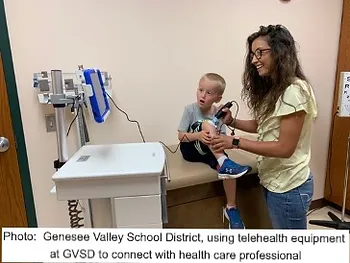
INTRODUCTION
The number one Agriculture school in the world is Wageningen University in the Netherlands, and has been for several years, as ranked by numerous sources.
(Cornell shows up at anywhere from 2-7, depending on the year and the ranking source.)
This semester, Dr. Bettina Bock from Wageningen is a senior visiting lecturer in our Development Sociology Department at Cornell to teach a 6 session graduate course called “Inclusive Rural Development in Times of Urbanisation.”
Here is a listing of her publications, some with links to articles.
Here is an interesting project she is involved in.
Here is an excerpt from the course description in the syllabus:
Since 2009 the urban population has outnumbered the population living in the rural areas. The situation differs considerably between high and low income countries, with about 80% of the population residing in urban areas in the former compared to 30% in the latter. Yet the tendency is crystal clear – the world is urbanising rapidly. Urbanisation is generally perceived as a sign of modernisation and, in turn, development and economic growth. At the same time there is concern about its effect on rural areas and their residents and anxiety that urbanisation concurs with continuous rural decline, impoverishment and social exclusion of rural residents, and rural abandonment. More insight into the interrelation between urbanisation and rural development and the preconditions for realising inclusive rural development is, hence, of crucial importance.
This course looks into the impact of urbanisation on rural areas and the processes of social and spatial differentiation that go along with it. It focuses on the presence and the construction of peripheral places in times of mobilisation and globalisation that change the significance of geographical location. The course is built up around six core questions:
(1) How does current trends of urbanisation affect rural areas and result in marginalisation?
(2) What does marginalisation mean for rural residents and how does marginalisation interact with social exclusion?
(3) How and why does gender, class and race matter and what does their specific effects tell us about rural development?
(4) How has rural development been approached so far in academia and policymaking?
(5) How can we explain the marginalisation of rural areas today in the light of globalisation and mobilisation?
(6) What can be done to counteract marginalisation and promote inclusive rural development?
I’ll be blogging about what we cover in class each week, to share with you not only the course content, but how this may relate to NY’s rural areas, especially schools. I hope to gain some insight on the dos and don’ts of how best to mitigate the negative impacts of population decline and how best to maximize any positive impacts.
So we just had our first class.
CLASS ONE
Readings –
We had 3 readings to do before class. My bulleted summary of juicy tidbits:
-
Brown D.L. and N. Argent N. 2016. The impact of population change on rural society and economy, in: M. Shucksmith and D. Brown (eds), International Handbook for Rural Studies, Oxon/New York: Routledge, 85-96
-
This reading really got me thinking about NY’s rural population decline in a more 3-dimensional manner. I had been thinking that all the kids graduate from high school and move away… but now I am thinking about some other things that might be going on…
-
Populations move in different ways for different reasons; some cause changes in economy and/or society, some result from changes in economy and/or society. This is complicated and context-dependent. In other words, there is no one reason why people move into or out of rural, urban, or suburban areas.
-
The main thrust of this reading was to put forth a “Framework for examining population change at the community level” p. 87. And so here it is:

p.88
-
What this is saying, from left to right, is that a variety of “changes” (economic, social, demographic, technical) can result in population shifts:
-
“net in” = net increase in population by people moving into the area who lived elsewhere. Say, a factory opens and hires 3000 people; people move into the area for the jobs. In this example, we are looking at a certain demographic moving in though – working age, employable.
-
“Net out” = a net outmigration, which is the reverse of net in: people moving out of your area to another area. Maybe the neighboring counties experience a “net out” when their working age, employable residents move to your area for the factory jobs.
-
“Nat inc” = natural increase, which is when the birth rate exceeds the death rate. This would require the presence of women of childbearing age, who are in fact bearing children, or perhaps a decrease in elderly (elderly out migration, for example).
-
“Nat dec” = natural decrease, where the death rate exceeds the birth rate. When working age, employable people leave an area, they’ll likely take the 0-18 year olds along with them when they move, since these are your typical parenting ages. This might leave a large proportion of elderly, who are unlikely to be bearing children, but are more likely to die off than the overall population. Thinking about the opioid epidemic, there can be other reasons for a natural decrease (also natural disaster, infertility, and probably others…)
-
So the combination of net in-migration with natural increase, will definitely result in population growth. Similarly net out-migration with natural decrease will definitely result in population decline.
-
But net in with nat dec, or nat out and nat inc can result in either, depending on which is higher, the increase/in, or the decrease/out.
-
Either way, we cannot stop at population growth or decline, we need to also look at to what extent the size of the population changed and how this impacts the demographic composition, as these then impact the functioning of the community, and thus the social and economic outcomes.
Overall, migration in or out of a certain area is usually tied to economic opportunity, or lack thereof.
The demographic make up of the movers and stayers will impact the functioning of the community: will there be more or fewer
-
School children
-
Taxpayers
-
Voters
-
Drivers
-
Consumers
-
Workers, etc
Slow change is easier to accommodate that rapid, change (stability), kind of obvious.
Local context will mitigate the results of population change, also kind of obvious but we don’t tend to think about it so much. For example, more children doesn’t necessarily mean more schools.
“Successful communities can balance the competitive and cooperative pressures of local government, private sector, and civil society.” P. 91
We also need to keep in mind, that while local contexts have a large impact on what happens when the population changes, this is just one level of a multi-level system: there are global, national, and state forces that will impact (regulations that ease or limit certain solutions), as well as distance from urban centers/degree of isolation, whether a community is coastal, or mountainous, availability of resources (clean water, clean air, health care, quality of schools, etc).
This reading ended with this:
“To maintain strong economies in the global world, local communities must stem out-migration of well-prepared young workers, maintain investments in public education so that new cohorts entering the labor force can compete for high-skill jobs, and provide skills training and updating across the life course. … deciding to make these kinds of investments requires a recognition that economic security depends on maintaining a competitive workforce, the political will to establish costly educational and job training programs, and sufficient economic resources to establish and maintain programs that support local workers and their families. Failure to make these investments results in a vicious cycle as localities become less and less competitive and more and more youth seek employment and residence elsewhere….
“Contrary to the prevailing neo-liberal approach to regional and local development, local and rural communities are rarely in a position to summon all of the resources to make these political, social and economic investments on their own. However with the aid of sympathetic communities, organizations and govts, often at broader scales, they can form collaborative arrangements to share resources and/or attract the kind of financial and political capital to maintain or gain new services and attempt to hold onto their populations.” p.92
Reading #2: Bock B.B., G. Osti & F. Ventura. 2016. Rural Migration and New Patterns of Exclusion and Integration in Europe, in: M. Shucksmith and D. Brown (eds), International Handbook for Rural Studies, Oxon/New York: Routledge, 71-84.
This reading touched more on the social dynamics of migration. For example, thanks to our technology today, many migrants feel connection and belonging to both the new location, as well as their home. This can manifest in civic and economic participation in both locations. Furthermore, people may move several times: to multiple new locations (to go to college, then graduate school, then one or more job locations, etc), or back and forth between just two (as with seasonal farm workers). Twenty – 30 years ago, migrants mainly identified with their home country. Now, younger people are seeing this as a means to get out and be adults, and they indetify wiht home and the new place, developing a trans-national identity.
There are 3 main ways to “integrate” into a new location:
1. Legal integration, when securing access to housing, education, social services;
2. Market integration, when securing employment and income; and
3. Civil integration, when forming social relationships, going to church, volunteering, etc.
The longer you stay in a location, the more you’re likely to be able to integrate – by increasing job skill, having children who go to school, coming socialized to the culture, etc.
Married couples, those with children, and entrepreneurs tend to integrate faster.
Generally though, integration is slow – multigenerational.
Reading #3: Rauhut D. and H. Littke. 2016. ‘A one way ticket to the city, please!’ on young women leaving the Swedish peripheral region Västernorrland. Journal of Rural Studies. 43, 301-310.
Women are moving out of northern Sweden at higher rates than men, even though post-industrialization is no longer an explanation. Further, better jobs, better pay, and better education do not explain why women move out more than men.
These authors interviewed women who left, who left and returned, who stayed, and who just moved to Northern Sweden with no prior experience there, to see what was going on.
They find that women leave to pursue higher education, to access better jobs and better pay, as well as lifestyle preferences for access to services and the arts. Those who leave for good also have weak social ties to home, and wish to earn income, rather than just being a wife and mother. Further, women leaving often cite the social activities in the rural homeland are very male-centered (eg. fishing, hunting, snow-mobiling) without female-centered options (theater, cafes, art exhibitions). The authors note that there are certainly “pull factors” (desirable characteristics) that the urban region offers, but also “push factors” (undesirable characteristics) from the rural region.
Women leave and return who tend to have stronger social ties, and/or can find jobs there. Their initial decision to leave was always for it to be just temporary. They intended to return to work and raise a family.
Women who moved in with no prior experience had done so due to a job offer.
So certainly employability and job opportunities play a part, but the social landscape is also a significant factor in these women’s decisions to stay or leave.
This is an important lesson for NY’s rural schools. If students do not have strong social ties to the area, they may look to leave. It behooves us to stem bullying, facilitate a sense of belonging and purpose, and support the economic opportunities that will sustain our unique contexts. Creating an environment students develop warm and fond feelings about increases the likelihood that, if they leave, that they will return to raise their own families.
Ok, now for class notes! That was just the reading.
I missed the first half because I had a conference call with the Executive Committee of the Board of Directors.
When I walked in, they were talking about the impacts of outmigration from rural areas:
-
Fewer people
-
Farms closing
-
Desertification (meaning previously productive farmland is laid waste as it’s no longer fertile for growing, and literally turns into desert).
-
Land grabbing (eg China buying land in Africa to ensure food production) people are leaving Africa… leads to spatial inequalities among countries. This might be what some perceive as happening with deserted farms being purchased on the cheap by Amish farmers.
-
Closing of schools, hospitals, etc.
-
“extraction zones” rural areas end up being in service to urban
-
including resource extraction for energy
-
People moving away from rural tend to be younger, better educated; those who remain, are older, lower income, etc.
-
Some areas perceived as “beautiful” will attract people who are more wealthy – this impacts the composition and function of the community
So there are differential impacts of rural depopulation, depending on whether and how a community is “connected.” Do they have influence over nearby urban policy? Do they have decent infrastructure – roads, bridges, internet, schools, health services. How are they connected to – and impacted by – local, state, national, and global changes?
Villages (rural) tend to focus inward (we want to keep OUR football team) without taking into account impact/influences outward.
The end…for this week.



